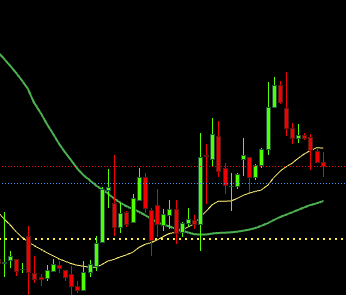Fibonacci Retracement: A Powerful Tool for Technical Analysis
Fibonacci Retracement is a popular technical analysis tool used by traders and investors to identify potential support and resistance levels in financial markets. Based on the Fibonacci sequence, this concept helps determine the extent of a market correction before the prevailing trend resumes. In this article, we'll explore the basics of Fibonacci Retracement, how it works, and its practical applications in trading.

What is the Fibonacci Sequence?
The Fibonacci sequence is a series of numbers where each number is the sum of the two preceding ones. The sequence starts with 0 and 1, and goes on as follows: 0, 1, 1, 2, 3, 5, 8, 13, 21, 34, 55, 89, 144, and so on. The sequence was discovered by the Italian mathematician Leonardo Fibonacci in the 13th century.
The Fibonacci sequence has a unique property: the ratio of any two consecutive numbers in the sequence approaches 1.618 as the numbers increase. This ratio is known as the Golden Ratio or Phi. The inverse of this ratio is 0.618. These ratios, along with other Fibonacci ratios like 0.382 and 0.236, form the basis of Fibonacci Retracement.
How Does Fibonacci Retracement Work?
Fibonacci Retracement is applied to a chart by taking two extreme points, usually a major peak and trough, and dividing the vertical distance by the key Fibonacci ratios of 23.6%, 38.2%, 50%, 61.8%, and 100%. These levels are believed to represent potential support or resistance levels where price could potentially reverse direction.
Here's how it works:
Identify the overall trend: Determine whether the market is in an uptrend or downtrend.
Locate the extreme points: Find the significant high and low points on the chart that represent the start and end of a major price move.
Draw the Fibonacci Retracement levels: Connect the high and low points with a trend line, then divide this line by the key Fibonacci ratios to create the retracement levels.
Watch for price reactions: Monitor how the price behaves as it approaches these levels. A bounce off a Fibonacci level could signal a potential reversal, while a break through a level may indicate a continuation of the trend.
Practical Applications of Fibonacci Retracement
Traders and investors use Fibonacci Retracement in various ways, depending on their trading style and strategy. Some common applications include:
1. Identifying Support and Resistance Levels
Fibonacci Retracement levels can act as potential support or resistance areas. In an uptrend, the 38.2%, 50%, and 61.8% levels may provide support during a pullback. Conversely, in a downtrend, these levels may act as resistance during a bounce.
2. Setting Entry and Exit Points
Traders can use Fibonacci levels to plan their entry and exit points. For example, a trader might wait for a price to retrace to a specific Fibonacci level before entering a trade in the direction of the prevailing trend. Similarly, they might set their profit targets at key Fibonacci levels.
3. Combining with Other Technical Analysis Tools
Fibonacci Retracement is often used in conjunction with other technical analysis tools, such as moving averages, oscillators, or candlestick patterns. When multiple indicators align with a Fibonacci level, it can provide a stronger signal for potential price action.
Limitations and Considerations
While Fibonacci Retracement is a widely used tool, it's important to remember that it's not a guaranteed method for predicting price movements. Markets can be influenced by various factors, including fundamental events, market sentiment, and unexpected news.
Additionally, the effectiveness of Fibonacci Retracement may vary depending on the asset, time frame, and market conditions. It's crucial to use Fibonacci Retracement as part of a comprehensive trading plan, along with proper risk management techniques.
Conclusion
Fibonacci Retracement is a powerful tool for technical analysis, helping traders and investors identify potential support and resistance levels in financial markets. By understanding how to apply Fibonacci ratios to price charts, you can improve your ability to make informed trading decisions. However, it's essential to use this tool in conjunction with other analysis methods and to always practice proper risk management. With time and experience, Fibonacci Retracement can become a valuable addition to your trading toolkit.